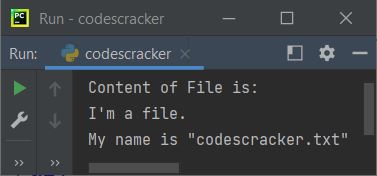- Python Built-in Functions
- Python All Built-in Functions
- Python print() Function
- Python input() Function
- Python int() Function
- Python float() Function
- Python len() Function
- Python range() Function
- Python str() Function
- Python ord() Function
- Python chr() Function
- Python ascii() Function
- Python pow() Function
- Python type() Function
- Python List Functions
- Python list() Function
- Python insert() Function
- Python append() Function
- Python extend() Function
- Python pop() Function
- Python remove() Function
- Python reverse() Function
- Python sort() Function
- Python sorted() Function
- Python Dictionary Functions
- Python dict() Function
- Python update() Function
- Python get() Function
- Python keys() Function
- Python setdefault() Function
- Python fromkeys() Function
- Python items() Function
- Python popitem() Function
- Python Tuple Function
- Python tuple() Function
- Python Set Functions
- Python set() Function
- Python frozenset() Function
- Python String Functions
- Python split() Function
- Python join() Function
- Python format() Function
- Python replace() Function
- Python Iterator Functions
- Python iter() Function
- Python min() Function
- Python max() Function
- Python sum() Function
- Python count() Function
- Python index() Function
- Python copy() Function
- Python clear() Function
- Python next() Function
- Python filter() Function
- Python enumerate() Function
- Python zip() Function
- Python reversed() Function
- Python Number Functions
- Python abs() Function
- Python bin() Function
- Python oct() Function
- Python hex() Function
- Python round() Function
- Python divmod() Function
- Python complex() Function
- Python File Handling Functions
- Python open() Function
- Python read() Function
- Python readable() Function
- Python readline() Function
- Python readlines() Function
- Python write() Function
- Python writable() Function
- Python writelines() Function
- Python close() Function
- Python seek() Function
- Python tell() Function
- Python flush() Function
- Python fileno() Function
- Python truncate() Function
- Python Class Functions
- Python object() Function
- Python property() Function
- Python getattr() Function
- Python setattr() Function
- Python hasattr() Function
- Python delattr() Function
- Python classmethod() Function
- Python staticmethod() Function
- Python issubclass() Function
- Python super() Function
- Python Misc Functions
- Python all() Function
- Python any() Function
- Python isatty() Function
- Python bool() Function
- Python callable() Function
- Python globals() Function
- Python locals() Function
- Python dir() Function
- Python id() Function
- Python isinstance() Function
- Python map() Function
- Python repr() Function
- Python slice() Function
- Python vars() Function
- Python Advance Functions
- Python help() Function
- Python hash() Function
- Python breakpoint() Function
- Python bytes() Function
- Python bytearray() Function
- Python memoryview() Function
- Python compile() Function
- Python eval() Function
- Python exec() Function
- Python Tutorial
- Python Tutorial
- Python Examples
- Python Examples
Python flush() Function
The flush() function in Python, used to flush the internal buffer. The word flush means clear. Therefore, flushing the internal buffer means clearing the internal buffer.
Note: After the use of close() function, Python automatically flushes the file. But, sometime, in rare case, a programmer may need to flush the file before closing it.
Basically, internal buffers and operating system buffers are the two types of buffer. And the flush() function deals with internal buffer. That is, it flushes the internal buffer.
Buffer can be said as a path to/from the memory to the Input/Output (I/O) devices. Therefore, while reading or writing the data to memory, the buffer is flushed, to prevent any possible garbage values from previous operations, from appearing.
Buffer can also be called as a portion of main memory of a computer system, used to temporarily hold the data that is being transferred into/out of the main storage.
Python flush() Syntax
Here is the syntax to use flush() function in Python:
fh.flush()
where fh is file object or file handler.
Python flush() Example
Here is an example program, demonstrates flush() function in Python:
file_object = open("codescracker.txt", "w") file_object.write("I'm a file.") file_object.flush() file_object.write("\n") file_object.flush() file_object.write("My name is \"codescracker.txt\"") file_object.close() file_object = open("codescracker.txt", "r") content = file_object.read() print("Content of File is:") print(content) file_object.close()
The snapshot given below shows the sample output produced by above Python program:

« Previous Function Next Function »